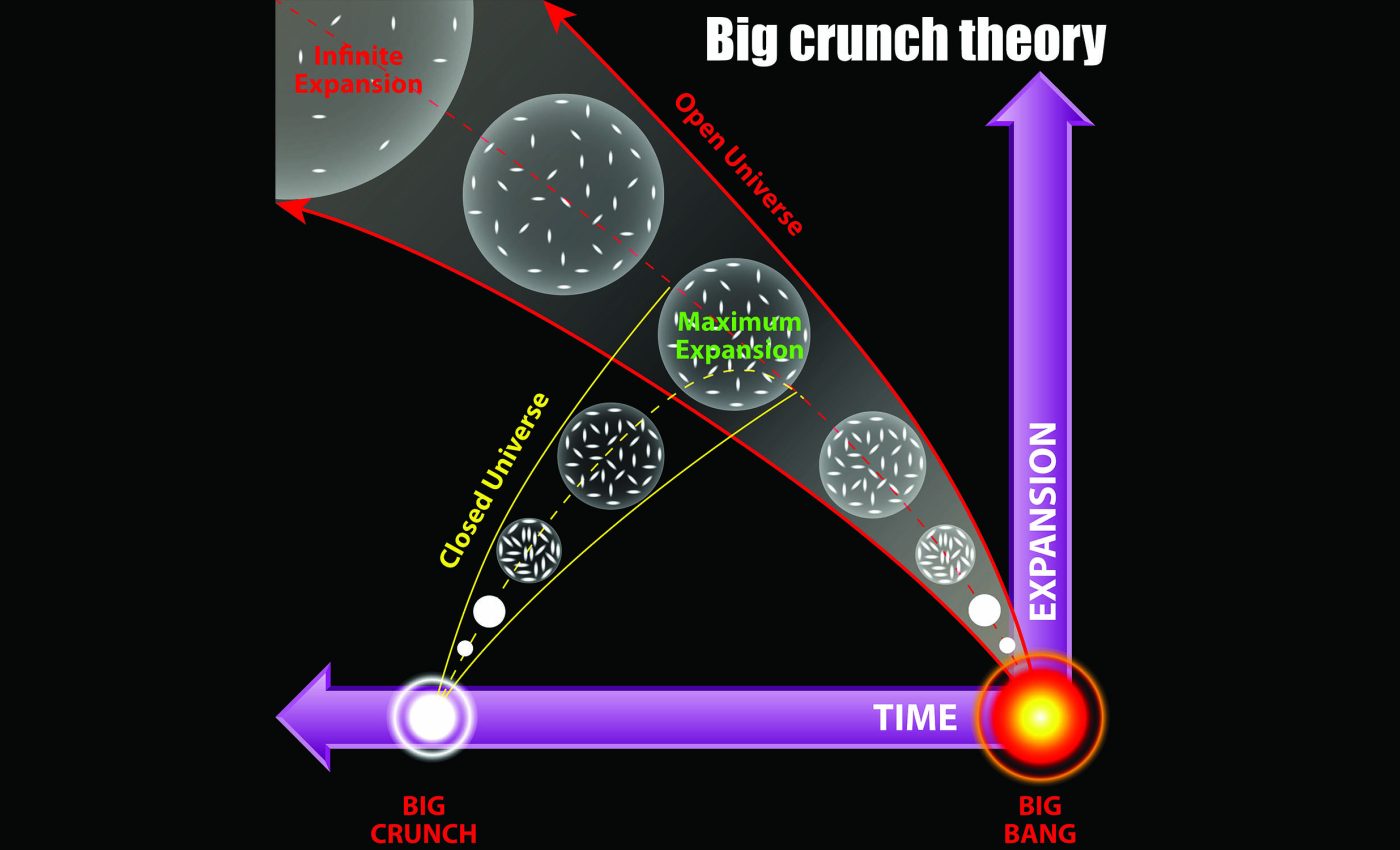
Study says the universe will 'end in a big crunch' and scientists predict when it will happen
We’ve grown up with the idea that the universe will expand forever, meaning that something called the “cosmological constant” is positive. Space keeps stretching, galaxies drift farther apart, and that seems final.
A new analysis suggests that story might be wrong. It argues that expansion could slow, stop, and – far in the future – reverse. This idea posits that the cosmological constant is actually negative, not positive, as we have assumed.
According to this study, the total lifetime of the universe could be about 33 billion years. The universe is about 13.8 billion years old today, which would leave roughly 20 billion years to go.
That is an enormous timescale, far beyond human experience, but it’s still a clear prediction.
The path to this answer runs through dark energy – the probable cause of the accelerating expansion of space – and a particle candidate called an axion. The work combines these pieces in a model and tests it against recent telescope surveys.
Dark energy and the cosmological constant
Henry Tye, the Horace White Professor of Physics Emeritus in the College of Arts and Sciences at Cornell University, updated a well-known framework that includes the cosmological constant.
He incorporated new measurements and looked at how a slowly changing dark energy could alter the universe’s long-term fate.
“For the last 20 years, people believed that the cosmological constant is positive, and the universe will expand forever,” Tye said.
“The new data seem to indicate that the cosmological constant is negative, and that the universe will end in a big crunch.”
Dark energy is a property of space that pushes the universe to expand faster. If its pressure-to-density ratio, written as w, equals −1 exactly, it behaves like a cosmological constant that does not change with time.
Many past measurements were consistent with w = −1. Recent results from the Dark Energy Survey (DES) and the Dark Energy Spectroscopic Instrument (DESI) hint that w might drift slightly away from −1. If so, dark energy may evolve.
Axions and the cosmological constant
An axion is a hypothetical, ultralight field that can act like dark energy early on and then change its behavior later.
In this setup, the axion provides most of the “accelerating” effect at first but slowly shifts, so its energy looks less like a steady push and more like something that evolves over time. That shift makes change, which lines up with the DES and DESI hints.
The model blends two ingredients: an ultralight axion and a cosmological constant. The best-fit values favor a slightly negative cosmological constant.
A negative constant does not dominate today because the axion still supplies most of the acceleration.
But as the axion’s effect weakens, the negative constant can take over. When that happens, expansion halts and contraction begins.
“People have said before that if the cosmological constant is negative, then the universe will collapse eventually. That’s not new,” Tye said. “However, here the model tells you when the universe collapses and how it collapses.”
Estimating the timeline
The team uses the standard Friedmann equations that describe cosmic expansion, adds the axion dynamics, and then evolves the system forward.
First comes a simplified analytic estimate to get a ballpark figure. Then comes a full numerical calculation with best-fit parameters.
Both approaches point to the same qualitative outcome: a turnaround followed by contraction when a small negative constant is present and the axion is still rolling today.
With the best-fit numbers, the full lifespan – from the Big Bang to a big crunch – comes out to about 33 billion years.
The contraction phase proceeds faster than the lead-up expansion, so once expansion stops, the universe shrinks on a shorter timescale than it took to reach maximum size.
DES, DESI, and uncertainty
DES and DESI provide suggestive but not final evidence for evolving dark energy. Parameters in the model are “degenerate,” meaning different combinations can match the data nearly as well.
If we move from the single best-fit point to values closer to the average allowed by current data, the predicted lifetime gets longer.
That tells us the 33-billion-year figure depends on where today’s measurements land in parameter space.
DES has mapped large areas of the southern sky, and DESI is building detailed 3D maps of galaxies and cosmic structure. As these surveys refine their catalogs and as other missions report in, the error bars will tighten.
The field could support an evolving dark energy picture and sharpen the timeline, or it could tip back toward a constant dark energy with endless expansion and no crunch.
The cosmological constant matters
Models that both fit today’s sky can forecast different futures. Switching from a fixed cosmological constant to an axion-plus-constant scenario reshapes the distant outlook.
The sign of that constant – positive or negative – plays an outsized role later, even if it is subtle today.
If the best-fit point holds, the universe’s total lifetime is about 33 billion years with roughly 20 billion years remaining; if not, the universe could last much longer.
These timescales are so vast that they strain common sense. Stars will be born and burn out. Galaxies will keep evolving. Civilizations could rise and fall many times before any slowdown appears in the expansion.
The takeaway is modest but meaningful: with new data and a flexible dark-energy model, the universe’s future might be finite rather than endless – and we now have a transparent way to calculate what that future could look like.
The full study was published in the journal arXiv.
—–
Like what you read? Subscribe to our newsletter for engaging articles, exclusive content, and the latest updates.
Check us out on EarthSnap, a free app brought to you by Eric Ralls and Earth.com.
—–













